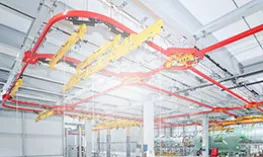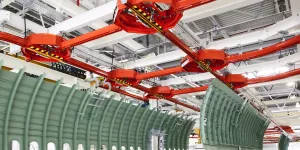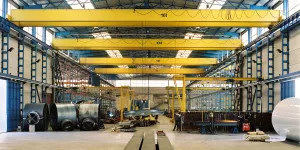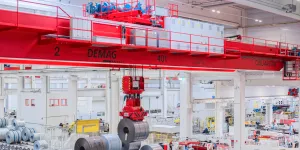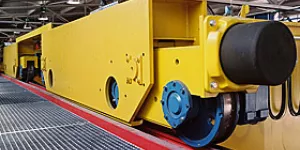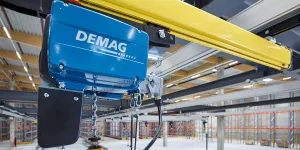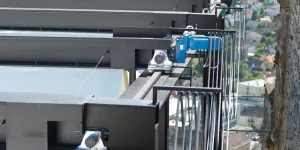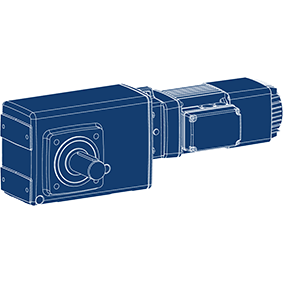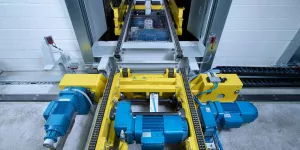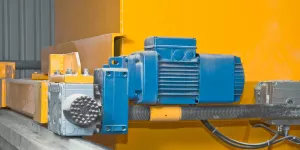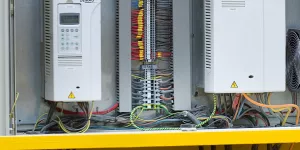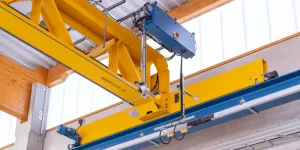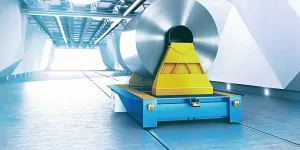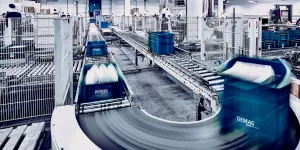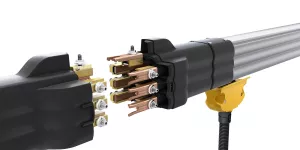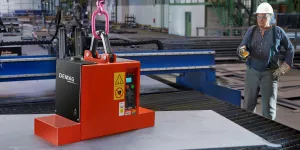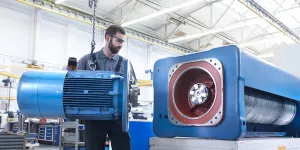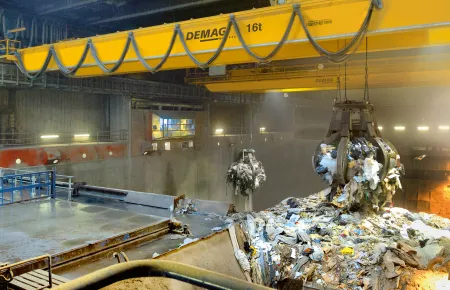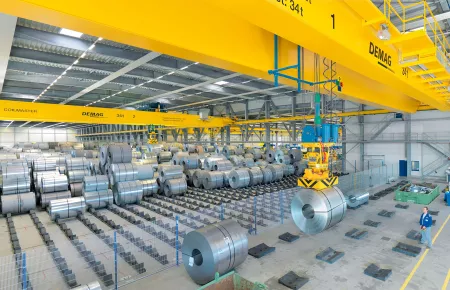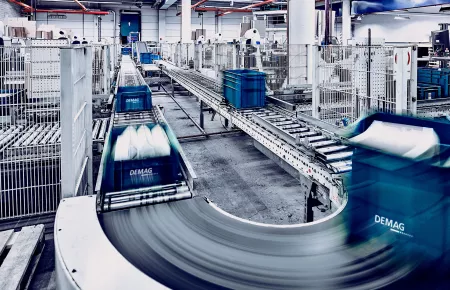Demag cranes for refuse incineration plant in Ningbo, China
- Shanghai SUS Environment orders process cranes for refuse incineration plant
- High handling rates in semi-automatic operation
- Mature technology accelerates recycling through refuse incineration in built-up areas
Terex Material Handling is to equip another refuse incineration plant in China with process cranes. The company received the order from Shanghai SUS Environment Co., Ltd. for three semi-automatic Demag process cranes for the refuse incineration plant in Yinzhou, a district of Ningbo. The cranes are to be used for storing materials, assembling the correct blend of fuel and for serving the furnace.
The three Demag double-girder process cranes will in future be operated in semi-automatic mode, and also in manual mode if required. They will handle 4,500 tons of refuse and feed another 2,250 tons to the three incineration lines every day. The grabs used to pick up the material each have a volume of twelve cubic metres and an active integrated load-sway damping system. This prevents load sway and protects against damage to the grab and bunker walls result from collisions, for example.
“Due to the high population density, Chinese cities generate a particularly large amount of refuse. We are therefore all the more delighted that our crane technology helps transport the rising volume of refuse to be processed as fast as possible”, says Dr Thomas Bönker, Senior Director Global Product Management & Process Cranes at Terex Material Handling. “In this way, Demag cranes also actively contribute towards protecting the climate and the environment.”
Precise and fast feed operation
The crane installations assume key functions directly at the start of the process sequence in the refuse incineration plant. They clear the tipping areas in the delivery zone and place the material in the refuse bunker. By restacking refuse on multiple levels, they play a decisive role in homogenising the material to be incinerated. This process and controlled feeding of the required quantities of refuse ensure constant incineration rates in the three furnaces.
The process cranes commissioned for this project have a span of 35.9 metres, a load capacity of 18 tons and are designed for a lifting height of 41 metres. The cranes travel on a 114-m-long crane runway and are equipped with position measurement and distance monitoring systems. Their low-maintenance multi-jaw grabs have a capacity of 12 cubic metres. The refuse bunker is 90.4 metres long and 29.4 metres wide. Each crane will handle around 2,250 tons per day for clearing and blending processes as well as for feeding the incineration furnaces. These very high handling rates are achieved by high working speeds with long-travel motions up to 100 m/min, cross-travel motions up to max. 90 m/min and load-dependent lifting/lowering up to 90 m/min, and the active Demag anti-sway system for fault-free operation.
Semi-automatic cranes combine the requirements of the operator for manual operation of the cranes with the advantages of automatic operation. In order to guarantee constant supply of the furnaces, configurable storage strategies are integrated in the crane controls to ensure automatic positioning and filling of the three incineration lines. Alternatively, the cranes can be fitted with a clamshell grab that has a load capacity of 2.5 tons. This is used to remove any piles of refuse caught in the feed hopper or to fetch specific objects from the refuse bunker.
Additional information
Ningbo is an important seaport on the south-eastern coast of China, approximately 300 km south of Shanghai. For years Ningbo has been characterised by fast economic growth; GDP is almost three times as high as the national average. Pro-capita refuse production has increased accordingly, which indicates a major need for action on refuse management. The planned refuse incineration plant at the site in Yinzhou, a district of Ningbo, is part of a strategy to avoid landfills and, at the same time, to use the constant volume of refuse in a cost-effective and eco-friendly manner by means of incineration. Residential and commercial refuse is used as fuel for power generation plants that supply households and industrial facilities. The planned refuse incineration plant is to incinerate 750 tons of refuse per day in three furnaces. The steam then drives two 25 MW medium-pressure condensing steam turbines, which serve two 30 MW generators. The refuse disposal contractor Shanghai SUS Environment Co. Ltd. is a general contractor who, with its broad technical expertise, offers sustainable solutions for both the private and public sector.
Contacto

Christoph Kreutzenbeck
Ruhrstrasse 28
58300 Wetter
Germany

